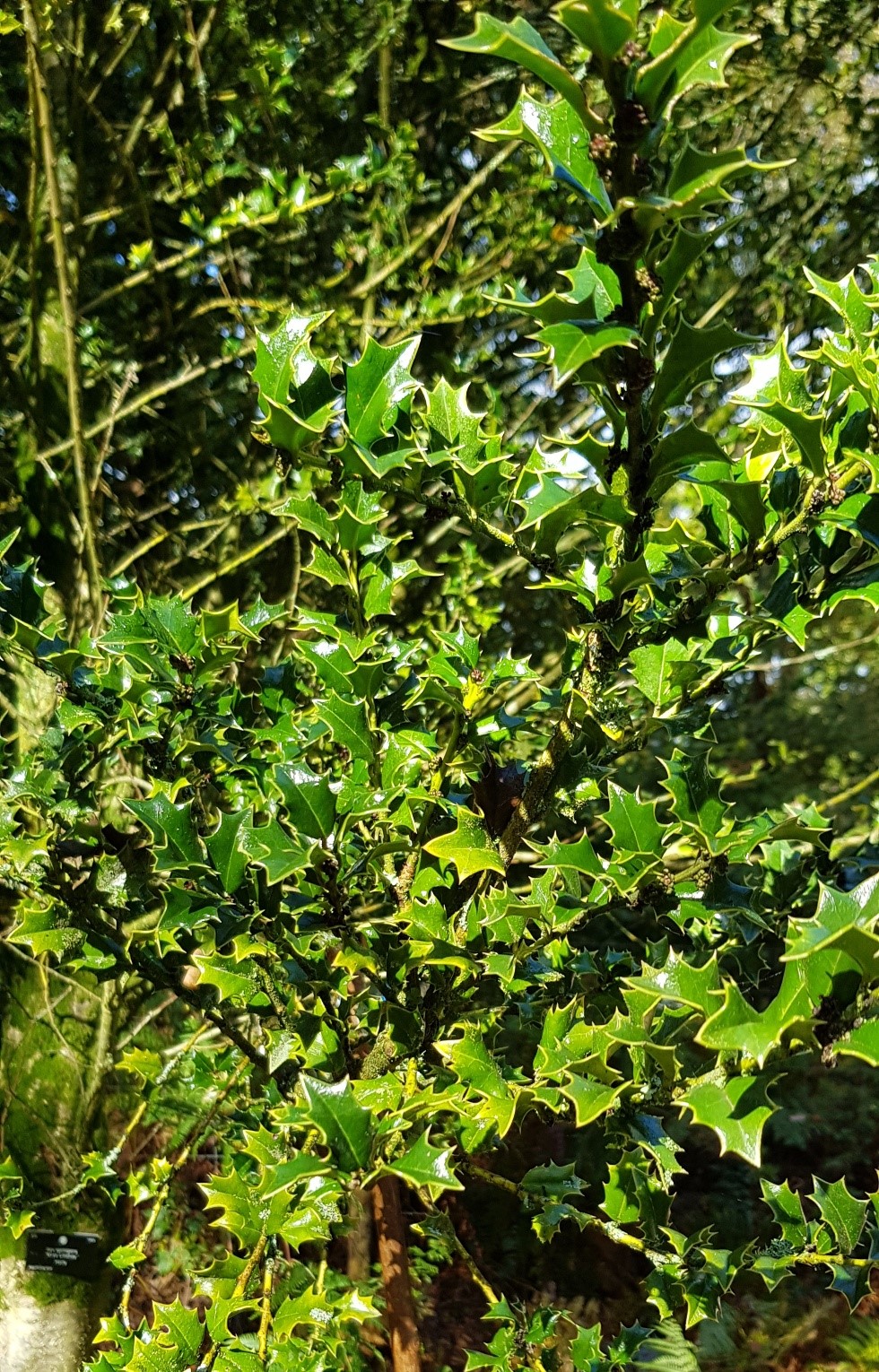Ilex spinigera
Credits
Article from New Trees by John Grimshaw & Ross Bayton
Recommended citation
'Ilex spinigera' from the website Trees and Shrubs Online (treesandshrubsonline.
Genus
Common Names
- Persian Holly
- Iranian Holly
Synonyms
- I. aquifolium L. var. caspia Loes. f. spinigera Loes.
- I. hyrcana Pojark.
Other taxa in genus
- Ilex × altaclarensis
- Ilex aquifolium
- Ilex bioritsensis
- Ilex buergeri
- Ilex cassine
- Ilex ciliospinosa
- Ilex corallina
- Ilex cornuta
- Ilex crenata
- Ilex cyrtura
- Ilex decidua
- Ilex dipyrena
- Ilex fargesii
- Ilex forrestii
- Ilex geniculata
- Ilex glabra
- Ilex hayatana
- Ilex hookeri
- Ilex integra
- Ilex intricata
- Ilex kingiana
- Ilex laevigata
- Ilex latifolia
- Ilex linii
- Ilex macrocarpa
- Ilex melanotricha
- Ilex mitis
- Ilex montana
- Ilex nothofagifolia
- Ilex opaca
- Ilex pedunculosa
- Ilex perado
- Ilex pernyi
- Ilex purpurea
- Ilex rotunda
- Ilex rubra
- Ilex rugosa
- Ilex serrata
- Ilex shennongjiaensis
- Ilex verticillata
- Ilex vomitoria
- Ilex yunnanensis
Shrub or small tree to ≥ 6 m. Densely branched; branchlets, buds and young leaves densely pubescent. Leaves evergreen, 3–4.5 × 1.6–2.5 cm, elliptic-ovate, undulate, upper surface glossy dark green, glabrous or with pubescence on the veins and margins, lower surface pubescent, somewhat punctate and with prominent vein ridges, three to six secondary veins on each side of the midrib, margins revolute, with two to four sharp spines on each side, apex reflexed and acuminate; petiole pubescent, 0.2–0.3 cm long and deeply grooved. Inflorescences fasciculate, axillary, each axis with a single flower (female) or three to four flowers (male). Flowers yellowish green, 4-merous, 0.8–1(–1.5) cm diameter. Fruit fleshy, red and globose-ellipsoid, 0.6–1 × 0.8–1 cm, with four pyrenes. Dudley 1981, Galle 1997. Distribution AZERBAIJAN: southeast; IRAN: northwest (Caspian Sea coast). Habitat Relict forests at about 600 m asl. USDA Hardiness Zone 7–8. Conservation status Not evaluated. Illustration Galle 1997; NT405. Cross-reference S285.
Ilex spinigera may have been introduced to Europe some time prior to 1903, when it was illustrated in a publication by Camillo Schneider (Dudley 1980, 1981), but if so there is no evidence that this material persisted in cultivation. Its first modern introduction was from an extraordinarily productive two-day foray into the Elburz mountains and Caspian forest of Iran by Roy Lancaster and Ann Ala, in December 1972, that led to several of the species described in this work becoming established in cultivation. A faulty gearbox gave the opportunity for a quick trip into the snow-clad Camarlou forest and, in Roy Lancaster’s words, ‘the forester struck a heap of snow with his axe, the resulting vibrations shaking free the branches of an unusual holly – Ilex spinigera’ (Lancaster 1974). Fruits borne by this individual became A&L 18 and the source of many of the plants currently in cultivation. Among these is the female growing in the Valley Gardens of Windsor Great Park, from which the material illustrated here (Figure 45) was collected. This is now a bushy tree, about 3 m tall with a spread of 6 m; such bushiness seems to be a feature of the species. The biggest individual recorded by TROBI was at Caerhays Castle, 4 m tall when measured by Owen Johnson in 2006. In addition to the Ala & Lancaster stock, trees are in cultivation from other gatherings. For example, there are a male (3 m tall in 2007) and a female (2.2 m) specimen at the Hillier Gardens derived from seed from Gilan, Iran, sent by the Iranian Botanical Garden of Tehran University in 1989; and Clarke (1988) mentions a collection made by Fliegner and Simmons in 1977 (although no material of this can now be traced).
The species is grown in several European collections. At Arboretum Bokrijk all specimens planted in the open have died, but a survivor in the shelter of the woodland garden is currently 4 m tall (J. Van Meulder, pers. comm. 2007). It reached the United States in 1975, when seeds of wild origin were received at the US National Arboretum (Dudley 1981), but it has remained rare in that country, although commercially available there (as it is in Europe). Dudley (1980) tabulated the points of difference between I. spinigera and the related I. colchica and I. aquifolium.


